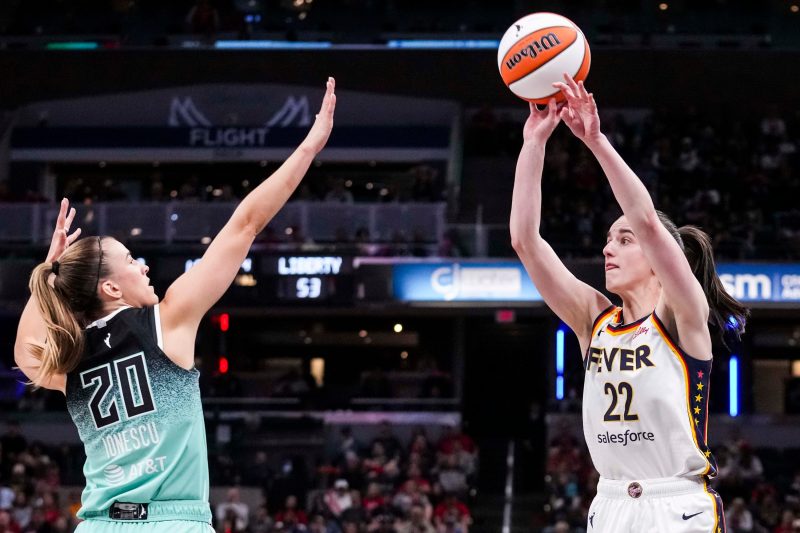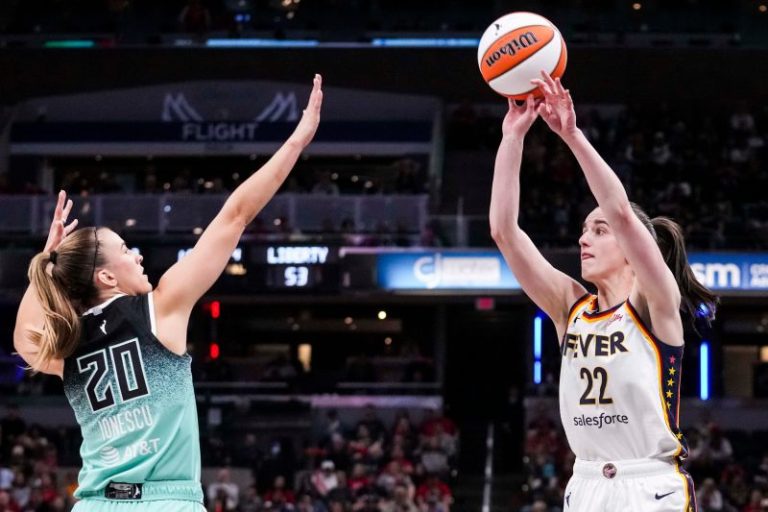
Colors are often used as symbolic cultural tools that evoke soul-stirring emotions. For the WNBA, its signature orange hue has accomplished that and more for the 29-year-old professional sports league. It’s also become synonymous with representation.
The phrase ‘If you can see her, you can be her’ is woven into the DNA fibers of that striking shade of orange, and its reach is growing beyond the hardwood. On June 9, the WNBA launched “Line ‘Em Up”, a nationwide campaign that seeks to paint the official WNBA 3-point line on outdoor courts across the country. The hope is that it will create a designated space for women and girl athletes on public courts, one of the most accessible areas within basketball.
‘When a young girl walks onto that basketball court and sees the WNBA orange 3-point line, they know that they’re being represented in a democratic community space where they once were not,’ Phil Cook, the league’s chief marketing officer, told USA TODAY.
As simple as the concept sounds, Cook revealed that the idea to paint the orange line developed into something more, the longer the WNBA dove deeper into the possibilities for young players. The league pondered: ‘What if we just painted an orange line on every outdoor basketball court in the country?’ Then it became, ‘And that orange line is the actual 3-point distance of the WNBA’s 3-point line.’ Finally, the WNBA’s front office landed on the true heart of the matter: ‘And we allowed young girls to go out and imagine them taking the same shot as their WNBA heroes at the park.’
Bingo.
With one proverbial brush stroke, the WNBA is potentially painting the early legacies of future pros, something that current Connecticut Sun center Tina Charles understands. ‘Growing up in Queens, New York, at that time, it was really hard to be a female to get on the court, ‘ Charles said in a short film developed as part of the campaign. ‘I know I had something to prove. We’ve all been through it. All the greats.”You think this line just showed up one day?’ challenged WNBA legend Sue Bird, who also makes an appearance. ‘Generations of women worked hard for every inch of that arc.’
Players like Bird, the recently retired Diana Taurasi, Minnesota Lynx guard Kayla McBride, and Indiana Fever forward DeWanna Bonner, who all sit on the top-ten list of the most made threes in WNBA history, drained shot after shot to get this moment. Their hard work built a foundation for today’s specialists, like Las Vegas Aces guard Jewell Loyd, Indiana Fever star Caitlin Clark and New York Liberty guard Sabrina Ionescu, who will, in turn, inspire many athletes who step behind the orange lines.
Still, as important as WNBA 3-point arcs across the country will be, the concept of creating access and safe spaces through representation isn’t new. The MLS maintains mini-pitches in each club’s city. The NFL has the ‘Play Football’ initiative, which engages youth through camps, activities and flag and tackle football. There are also numerous court refurbishment projects across the country. So, what makes this initiative different, a cut above the rest?
‘I think what makes us unique is that this was the one simple kind of initiative or action that differentiated just an upgrade. It’s an upgrade in that it represents a league that was ignored in this space,’ Cook explained. ‘The entire WNBA was not represented in this space. Dropping that line down now represents an entire league’s identity and can drive participation and authenticity in this space.’
What’s more, Cook shared that the increased visibility by bringing professional women’s basketball closer to communities and parks could provide a glimpse into just how far-reaching the WNBA’s impact is becoming.
‘When we start seeing young athletes, young women chalking up their driveways with orange chalk to represent that 3-point line ― when we get to that virality of scale, we’ll know we’re onto something.’

